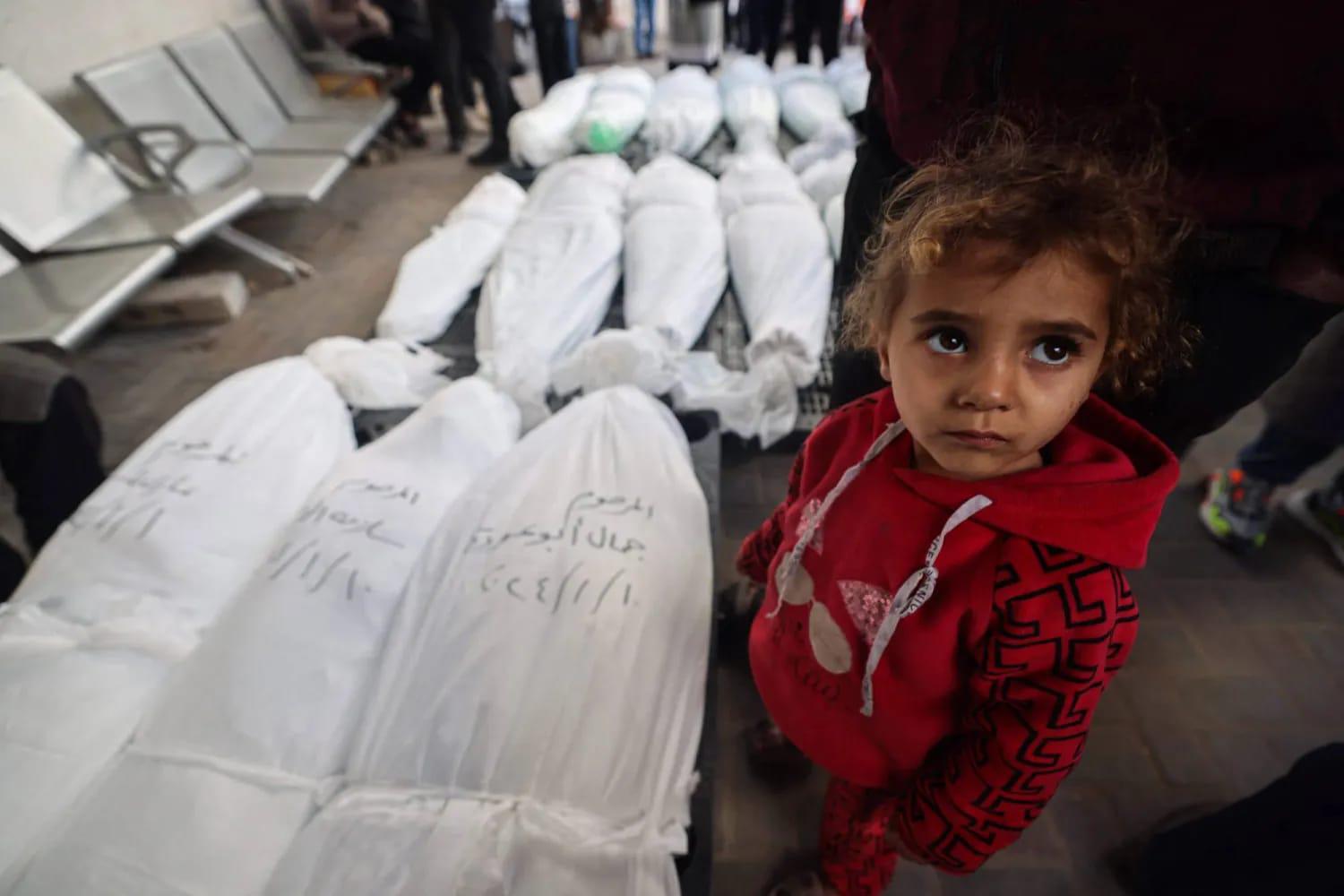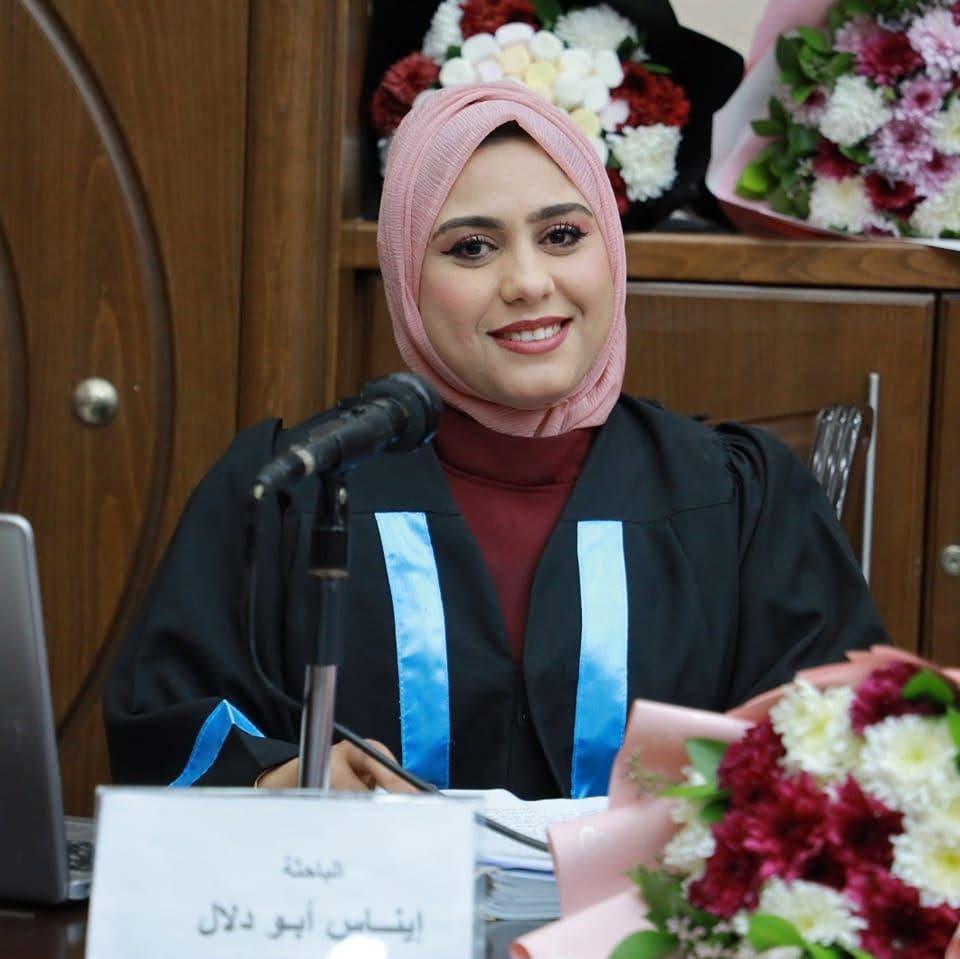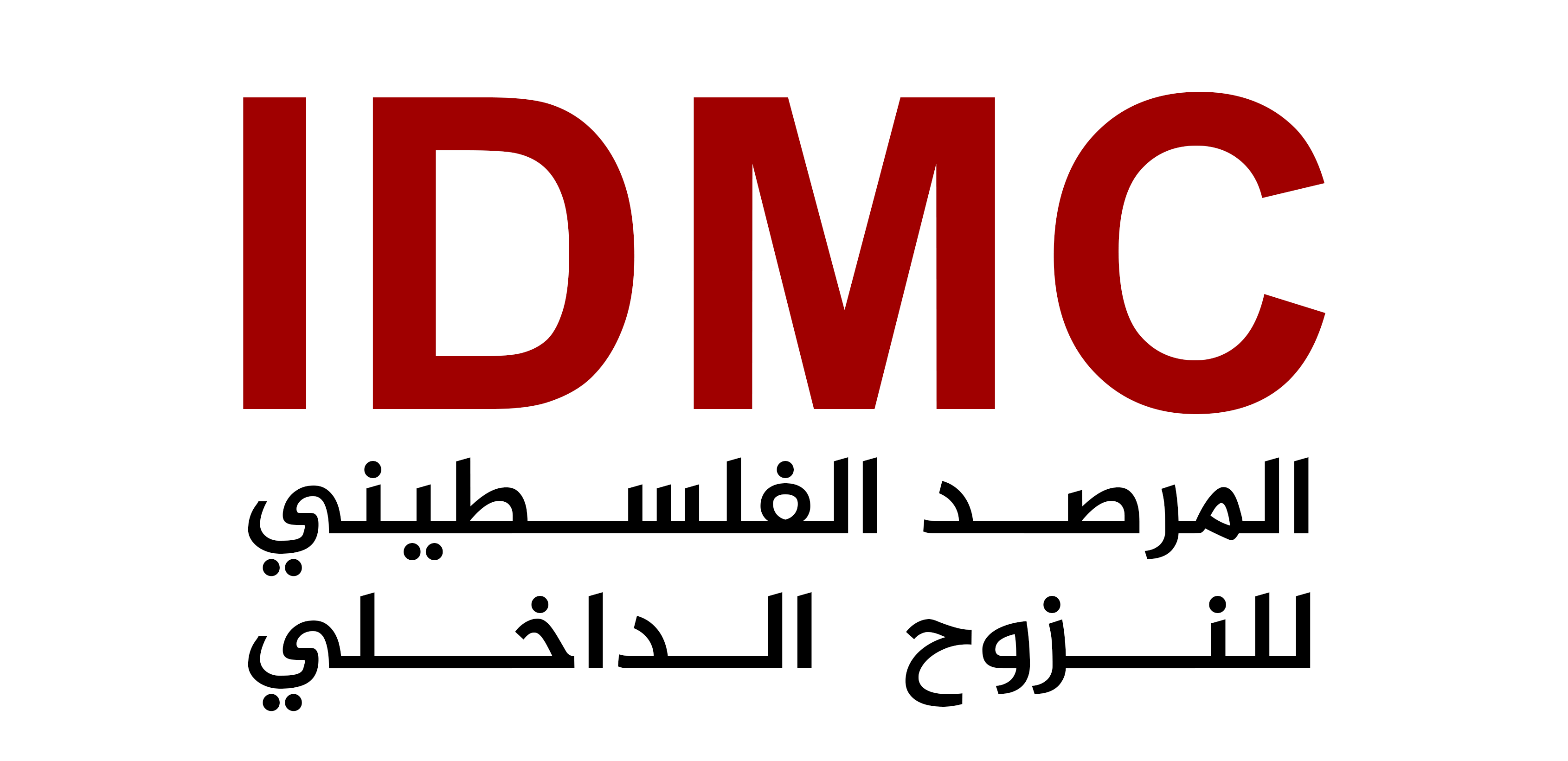
The Reality of Unaccompanied Children During the Genocide War on the Gaza Strip
Introduction
One of the most significant effects of wars and armed conflicts is the phenomenon of internal displacement, particularly as witnessed during the recent war on the Gaza Strip. That conflict produced numerous humanitarian crises that profoundly affected the lives of civilians in general—and children in particular. Among these crises, the emergence of unaccompanied children, those separated from or deprived of their families, is especially tragic. This group stands among the most vulnerable during armed conflicts, facing severe hardships and multiple threats. Chief among these are the loss of protection and care, as well as an increased risk of exploitation since they are less capable of supporting or safeguarding themselves. It was therefore imperative to implement the rights established by laws, regulations, and the international conventions that affirm and protect the rights of unaccompanied and parentless children, and to put in place effective protection mechanisms to mitigate the suffering and risks these children face—especially during the genocide war launched by the Israeli occupation beginning October 7, 2023, which saw a marked increase in the number of unaccompanied and parentless children.
Who Are Unaccompanied or Separated Children?
This category is divided into several groups:
- Unaccompanied Children: Also referred to as unaccompanied minors, as described in Article (1) of the Committee on the Rights of the Child. These are children below the age of majority who are separated from both parents and other close relatives, and who do not have an adult (by law or custom) responsible for their care.
- Separated Children: Defined in the same article as children who are separated either from both parents or from the person who was previously responsible for their primary care—whether by law or custom—without necessarily being separated from their extended family. Frequently, the cause of their separation is migration or forced displacement from one area to another without their families.
- War Orphans: These are children who have lost their parents as a result of war or armed conflict.
Reports and Statistics
During this grim period in the Gaza Strip amid the Israeli aggression, it is difficult to obtain precise statistics on unaccompanied and parentless children. Nonetheless, official bodies and active institutions have attempted to gather many figures—most of which are estimated numbers. According to a pictorial report prepared by UNICEF on August 28, 2024, it stated:
“Since October 2023, the children of Gaza have lived under continuous threat, their lives a series of disturbances. At least 19,000 children have been forced to fend for themselves under horrific conditions after being separated from their families or those who could care for them.”
Additionally, estimates by the United Nations Children’s Fund indicate that no fewer than 17,000 children in the Gaza Strip are either unaccompanied or separated from their families, representing approximately 1% of the total 1.7 million displaced persons (unicef.org).
A report prepared by the British Save the Children organization on June 24, 2024, noted that while it is nearly impossible to gather and verify accurate information under the current circumstances in Gaza, one estimate suggests that around 17,000 children have been separated from their families as a result of the war on Gaza. Moreover, an unknown number of children have been forcibly detained and transported outside of Gaza; their families have no knowledge of their whereabouts, and they are reportedly subjected to mistreatment and torture. A child protection specialist with Save the Children commented that the situation in Gaza is worsening day by day for children who have lost their families or been left without care. He added, “We are working with our local partners to identify and assist unaccompanied children, but there is no safe haven for these children in Gaza.” He further explained that the families hosting these children struggle to meet their basic needs, such as shelter, food, and water.
Another report by UNRWA on services provided from October 7, 2023, to January 13, 2025, stated:
“The social work team at UNRWA assisted a total of 204,359 displaced persons, including the provision of psychological first aid, psychosocial support, family and individual interventions, and case management. During the same period, protection services were provided to 1,898 survivors of gender-based violence, in addition to 3,052 children—of whom 1,494 were unaccompanied—involving family tracing, the provision of safe shelter, medicines, dignity kits, and non-food items.”
Since the onset of the Israeli aggression on the Gaza Strip on October 7, 2023, children have faced numerous challenges imposed by the occupation. Unaccompanied and parentless children have borne the brunt of these challenges because they are the most vulnerable in society when confronted with such hardships. The occupation has blatantly disregarded all international conventions and agreements on children’s rights, routinely violating these norms by engaging in criminal policies of killing, assault, and violence, as well as a deliberate starvation policy affecting civilians of all ages in the Gaza Strip.
The Israeli aggression has left behind a large number of unaccompanied and separated children. This is primarily due to internal displacement resulting from the occupation’s policy of forcibly expelling and displacing safe and non-combatant Palestinians from their northern homes to the south, following the division of the northern and southern areas and concentrating in the Nitsarim corridor. Statistics indicate that approximately 1.9 million Palestinians were displaced from northern Gaza to the south. Additionally, the occupation forcibly separated southern areas—for example, in Rafah, where an estimated 200,000 residents were coerced to move to designated humanitarian zones. This is the main reason behind the increasing number of cases where children are separated from their parents. Furthermore, the Israeli aggression has left many children completely orphaned—estimates indicate that since October 2023, at least 17,000 children have become unaccompanied or parentless under the horrific conditions following their separation from caregivers or after losing their parents during the aggression.
First: The Specific Rights Granted to Unaccompanied and Parentless Children
- The Right to Regular Communication with Family:
One of the most important rights established by both national and international legislation is the right for unaccompanied children to maintain regular and continuous communication with their families whenever possible—especially during times of conflict when such contact is crucial. - The Right to Protection:
National and local charters reaffirm the right to protection for unaccompanied children, particularly in emergencies and crises when they need immediate and comprehensive protection. This includes protection from all forms of violence and exploitation, as stipulated in Article (19) of the Convention on the Rights of the Child. This article obligates state parties to cooperate internationally in safeguarding children by enacting appropriate legislative, administrative, social, and educational measures, as well as by establishing coordinated plans to provide necessary support and prevent child recruitment below the legal age. Such protections are vital, given that unaccompanied and separated children are inherently vulnerable due to the absence of a family safety net. - The Right to Alternative Care:
International and national conventions, notably the Convention on the Rights of the Child (Article 20/2), oblige states to provide alternative care for these children. This alternative care can take the form of foster care, sponsorship, adoption, or placement in appropriate institutions—measures intended to alleviate the suffering of unaccompanied or separated children. - The Right to Education and Healthcare:
Legislation—particularly Article (28) of the Convention on the Rights of the Child for education and Article (24) for healthcare—ensures that every unaccompanied or separated child has the right to access both education and healthcare. This right is classified as a special right given its critical importance in maintaining the overall well-being of the child.
Second: The Violations Suffered by Unaccompanied or Separated Children Since the Latest Aggression on the Gaza Strip (October 7, 2023)
- Violation of the Right to Maintain Family Communication and Loss of Family Protection:
The Israeli occupation has violated the right of unaccompanied children to maintain contact with their families as guaranteed by international and local laws. Article (21) of the Child Rights Law (2004) explicitly protects a child’s right to maintain direct, regular personal relationships and communication with their parents when separated—yet internal displacement and the separation of northern from southern Gaza have led to the scattering of families and the separation of children from their parents. Consequently, specialized institutions, notably the Red Cross, are urged to work on family reunification, especially following the withdrawal of the Israeli army from Gaza during the ceasefire that took effect on January 19, 2025. - Neglect and Deprivation of Protection and Care:
Unaccompanied and parentless children have been denied the protection mandated by international and national agreements. Due to the Israeli aggression on Gaza, many of these children, having lost their parents, suffer from neglect as they do not receive sufficient medical or psychological care. Often, they are forced to remain in unsafe conditions—whether in refugee camps or other locations that do not provide adequate protection. - Violation of the Right to Education and Healthcare:
The outbreak of the war halted the educational process throughout Gaza from October 7, 2023. This not only affected unaccompanied and parentless children but also other school-aged children, severely disrupting their educational journey. In the case of unaccompanied children—due to their loss of family support—the already limited opportunities for education, including alternative learning programs in displacement camps or shelter centers, have been further diminished compared to their peers. - Exposure to Sexual Exploitation and Forced Labor:
In the absence of adequate protection, children who have lost their families or are separated become vulnerable to exploitation, including forced labor and sexual abuse. Such outcomes often stem from the overall deteriorating security situation in Gaza during the genocide war. - Psychological Violence:
Unaccompanied and parentless children endure severe psychological violence due to traumatic events they have experienced. In an interview, Dr. Nawal Asqol—a specialist in human development and vitality from the village of Al-Wafa for Orphans—stated:
“I treat children in the village as well as those outside through therapeutic sessions aimed at restoring the internal balance of the body and the brain’s awareness pathways. After the genocide war and the opening of the special orphanage in the village, a large number of children—especially those who lost all their family members—exhibited high suicidal tendencies, aggressive behavior, disorientation, and signs of self-denial. Approximately 3,000 children were treated, 90% of whom have severe psychological issues that challenge conventional therapy; 15–20% show suicidal tendencies, and around 40% display symptoms of bipolar disorder. The majority of these children exhibit aggressive and withdrawn behaviors, completely contrasting with the pre-war psychological state of Gaza’s children. I treat these children through sessions without relying on medications that might harm them or lead to dependency. We need a healthy, sound, and aware generation.”
- Physical Violence:
All children in Gaza, especially unaccompanied and parentless ones, have been subjected to various forms of physical violence. Israeli attacks have resulted in killings, injuries, dismemberment, and burns on children’s bodies. The occupation not only disregarded the children’s right to physical protection but also actively caused fatalities and dismemberment. For instance, Yazan Fathi Abu Dallal—a 15-year-old boy—lost his legs as a result of an Israeli airstrike on his home. He explained:
“I left Gaza to receive treatment in Egypt. I was injured on November 11, 2024, due to an Israeli strike on our home, which resulted in the amputation of my legs. I am very saddened by the fact that I had no one with me, and I want to return to Gaza without any prostheses so I can live with my family in the Strip.”
- Social Isolation and Loss of Trust in Society:
Unaccompanied and parentless children, due to their traumatic loss of family, often experience isolation and a profound loss of security—especially during times of aggression. This makes it difficult for them to build healthy social relationships and undermines their trust in society, leaving them vulnerable to chronic psychological issues such as depression or post-traumatic stress disorder. For example, Hiba Abu Khousa recounted in an interview regarding 11-year-old Rama Abu Khousa—who lost her entire family during an Israeli airstrike on their home in Al-Nuseirat Camp on October 3, 2023—that:
“Rama, who is my niece, was with me outside our home when our house in Al-Nuseirat was bombed. The Israeli occupation coldly killed all of Rama’s family, leaving her completely alone. Rama now suffers from severe psychological disturbances; she only wants to sit by herself. I tried very hard to help her recover, but she remains withdrawn and silent. When I asked her about her future care, she said that I was the one who took care of her after she lost her parents.”
- Difficulty in Locating Missing Children:
One of the challenges faced by unaccompanied or parentless children is the difficulty in locating them amid the current dire situation in Gaza—a consequence of the ongoing Israeli aggression. In response, humanitarian institutions and organizations have developed guides for handling cases when an unaccompanied or missing child is found, utilizing social media platforms or shelter centers. For example, the Sanad network has published protocols for dealing with unaccompanied children and provided contact numbers for reporting such cases.
Framework Two: Legal Protection for Unaccompanied and Parentless Children
National Legal Protection:
The legislator did not overlook the rights of children. The Palestinian Child Law of 2004—which is the cornerstone for safeguarding children’s rights in the State of Palestine—complies with the Convention on the Rights of the Child (ratified by Palestine in 1991). This law obliges Palestinian authorities to protect children from all forms of exploitation and violence, including the protection of unaccompanied children during emergencies and conflicts. It guarantees these children their rights to healthcare, education, and shelter when separated from their families. Notably, the law enshrines several specific rights for unaccompanied or parentless children, such as Article (21), which ensures a child’s right to maintain personal relationships and direct, regular communication with their parents if separated, as well as Article (31), which secures social assistance for orphans, children in social care institutions, or those without family. Article (32) further establishes the right to alternative care—whether through a foster family or placement in public or private social care institutions when a foster family is unavailable. Regarding protection, Article (42) states that a child is entitled to be safeguarded from all forms of physical, psychological, or sexual abuse, neglect, and exploitation. The state is required to take all necessary measures to secure this protection. In fact, the law classifies unaccompanied children among those most at risk, as outlined in Article (44).
International Legal Protection:
International laws and treaties also protect children’s rights in general, and specifically in cases of conflict or humanitarian crises. Key international instruments include the Convention on the Rights of the Child (1989)—the fundamental document protecting children’s rights worldwide—which contains specific provisions for unaccompanied or parentless children, particularly in times of armed conflict and internal displacement. In addition, the Optional Protocol on the Involvement of Children in Armed Conflicts, the Geneva Declaration on the Protection of Children in Armed Conflict, and rules under international humanitarian law all contribute to the international legal framework. Moreover, the international community has developed guidelines for working with unaccompanied children in humanitarian crises under the auspices of the United Nations.
Framework Three: Solutions and Recommendations
- Providing Continuous Psychological Support:
It is imperative to offer ongoing psychological programs for unaccompanied and parentless children, who suffer deep psychological trauma due to family separation or loss during the Israeli aggression since October 7, 2023. As Anne Skelton, head of the United Nations Children’s Rights Committee at UNICEF, noted, Israel flagrantly violates the rights of children in Gaza in ways rarely seen in modern history. She stressed that no child in Gaza is free from fear, pain, or hunger, and that many have lost their childhoods and will carry the psychological scars for life. This underscores the urgent need for substantial psychological and social support for both the children and their families. - Enhancing Coordination Between Governments and Humanitarian Organizations:
Effective protection of children’s basic rights—including education, healthcare, and family reunification—requires the concerted efforts of local and international bodies. This is in line with Article (10) of the Convention on the Rights of the Child, which calls for the prompt and humane reunification of families. - International Pressure on the Israeli Occupation to Maintain the Ceasefire:
It is crucial to exert international pressure on the Israeli occupation to maintain the ceasefire and stability, thereby reducing the rising numbers of unaccompanied and parentless children. The occupation must be compelled to adhere to international laws and conventions that protect children during armed conflicts, and to cease policies of forced displacement, killing, and destruction that have led to this humanitarian crisis. - Collaboration Between Civil Society Organizations and International Bodies:
Given the brutal nature of the Israeli aggression and its devastating impact on children, it is essential for civil society organizations to work alongside international organizations such as UNICEF and the International Red Cross. Their joint efforts should focus on delivering health, educational, and family reunification services, coordinating with Palestinian authorities, and ultimately preventing further family separations.
Conclusion
There is no doubt that the Israeli aggression and the resulting crimes and violations have been committed against children in general—and against unaccompanied and parentless children in particular. Such actions starkly contradict international laws and conventions, constituting complete war crimes and blatant breaches of international humanitarian law, notably the Declaration of the Rights of the Child and the Convention on the Rights of the Child.
As a result, unaccompanied children face enormous challenges and risks. They are exposed to exploitation, violence, and severe obstacles in accessing healthcare and education. Humanitarian organizations are striving to provide immediate and ongoing support to these children through every possible means. However, the current situation in the Gaza Strip remains catastrophic due to the devastating impact of the Israeli aggression, which continues to hamper humanitarian efforts.
International and local efforts—supported by active humanitarian organizations and individual initiatives aimed at protecting and caring for affected children, reuniting them with their families when possible, or through the establishment of alternative care systems such as foster care, adoption, and sponsorship—are not yet sufficient to counter the widespread violations faced by unaccompanied children in Gaza.

Inas Ihab Abu Dalal
A lawyer and human rights activist, interested in children's issues and people with disabilities.
 English
English

